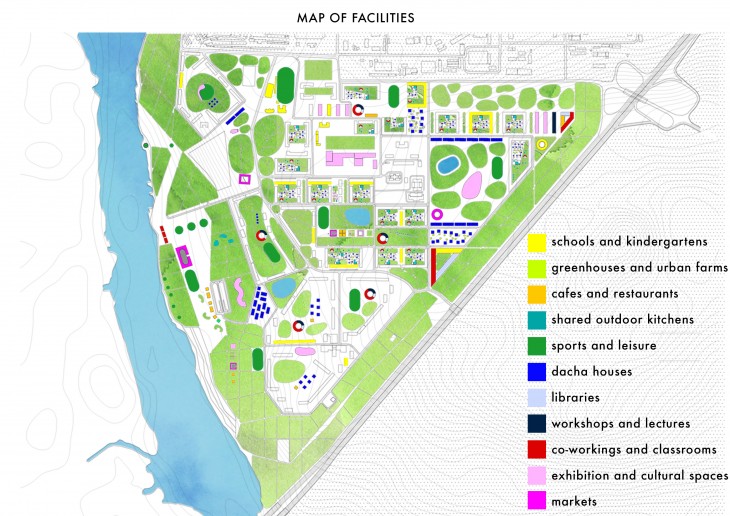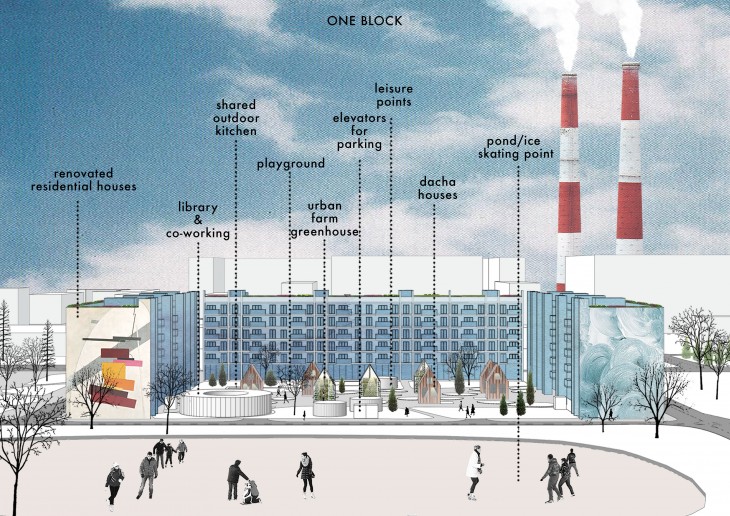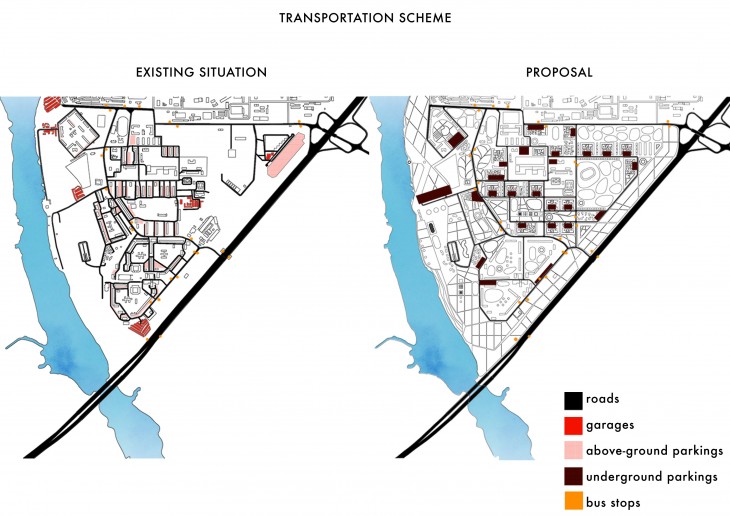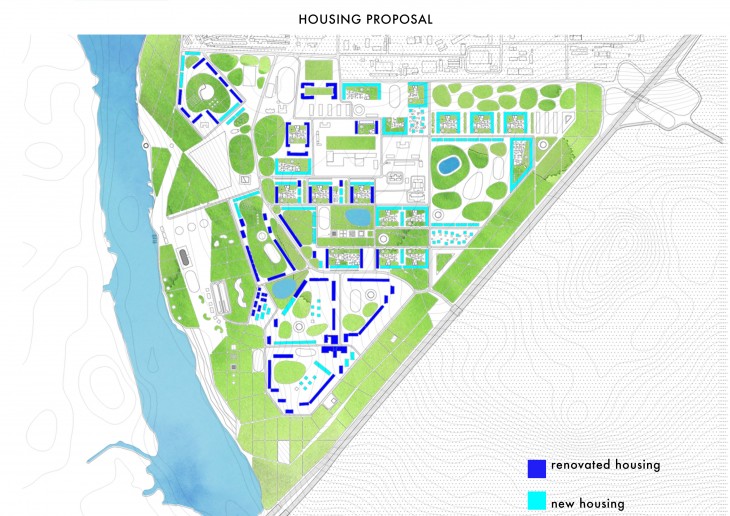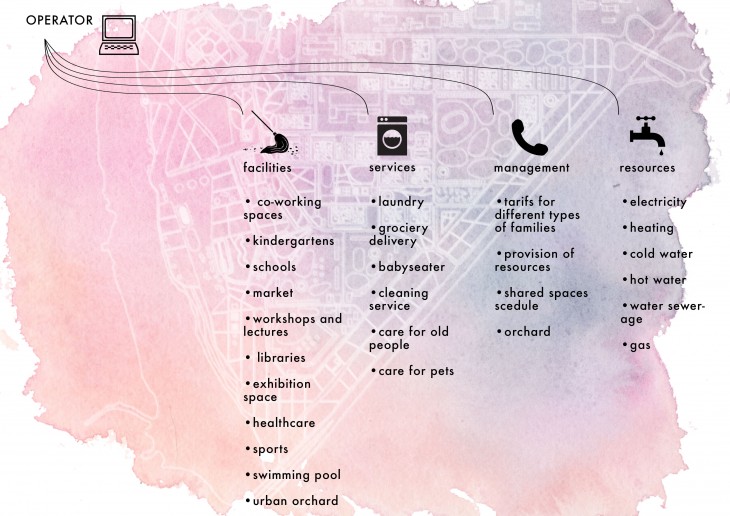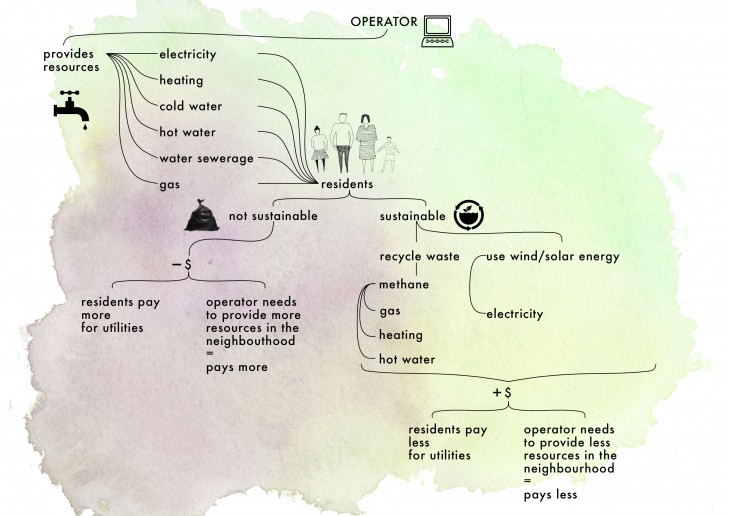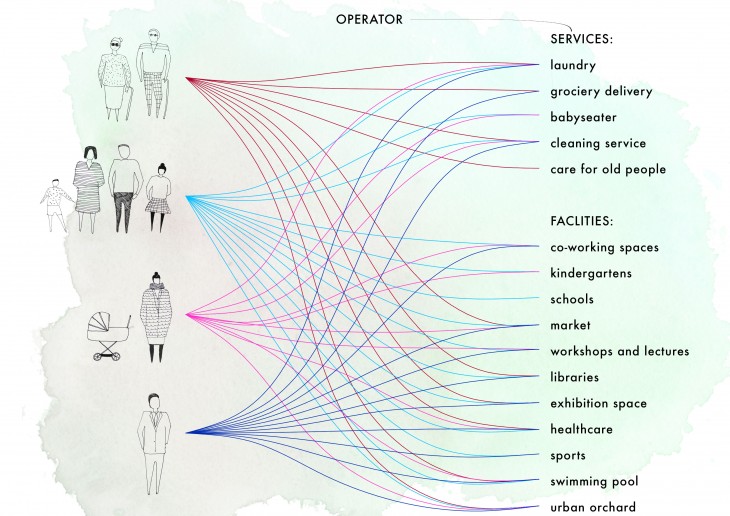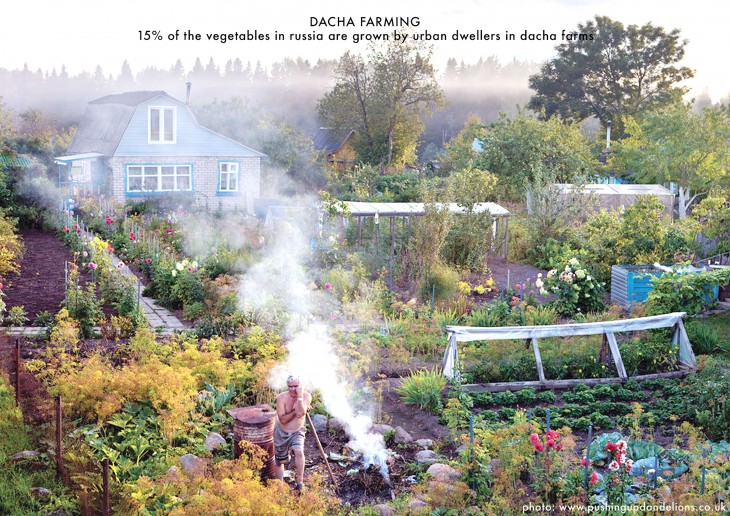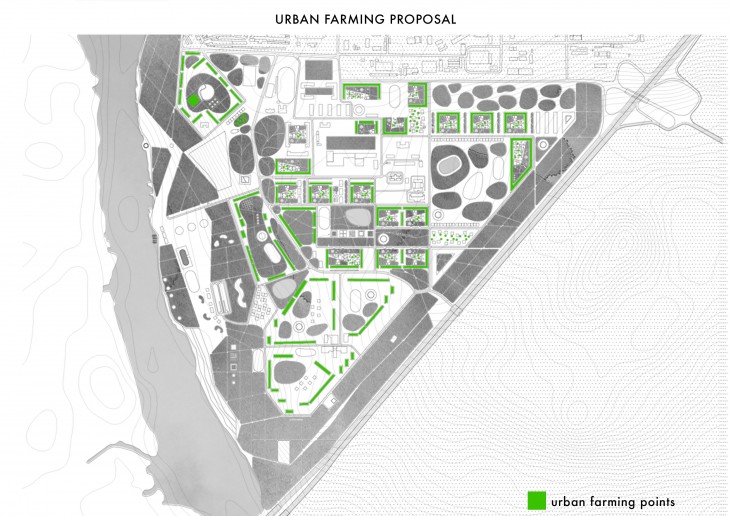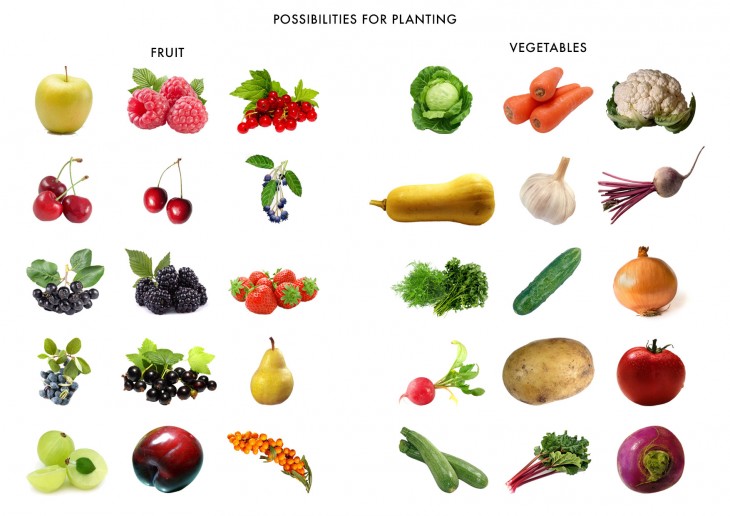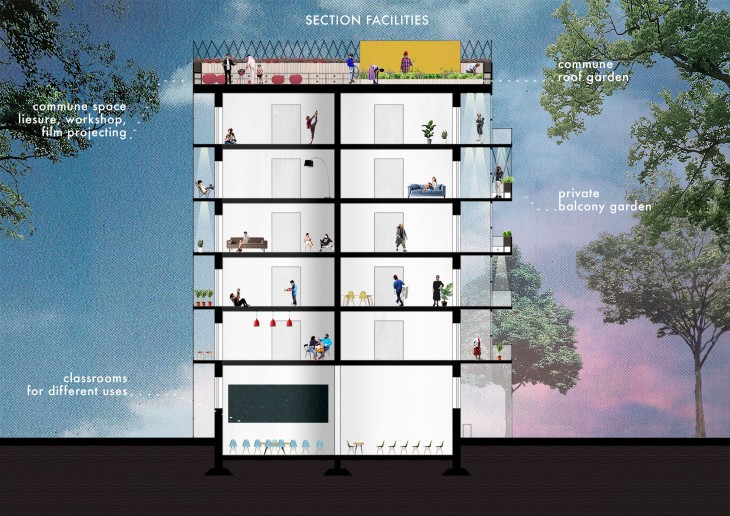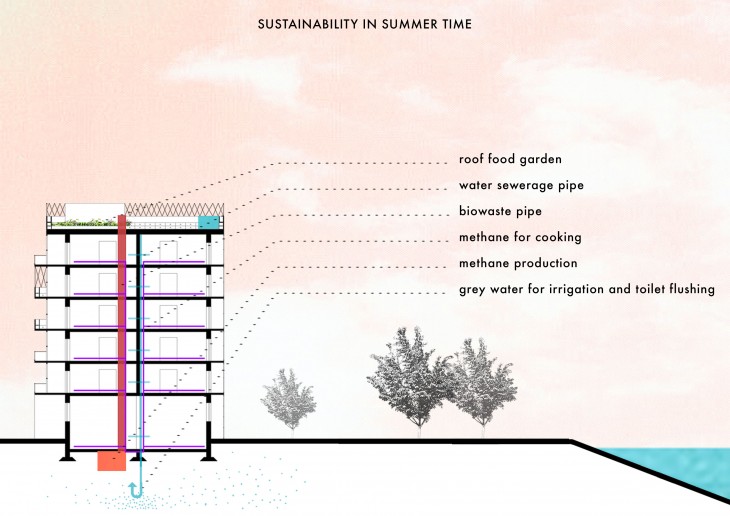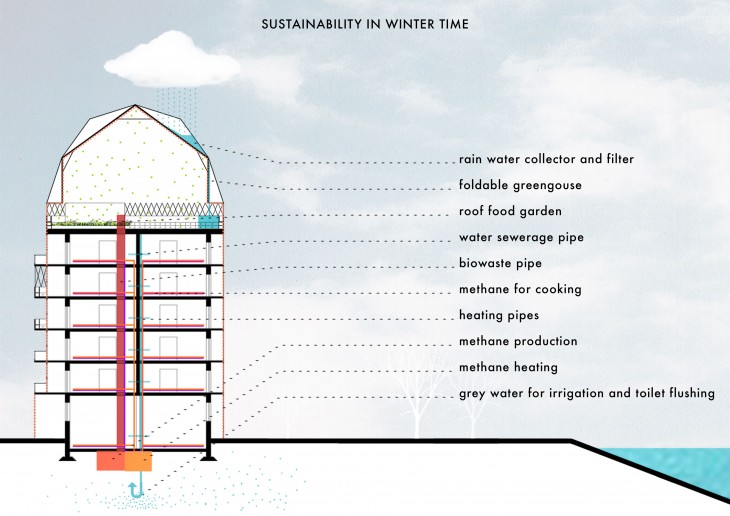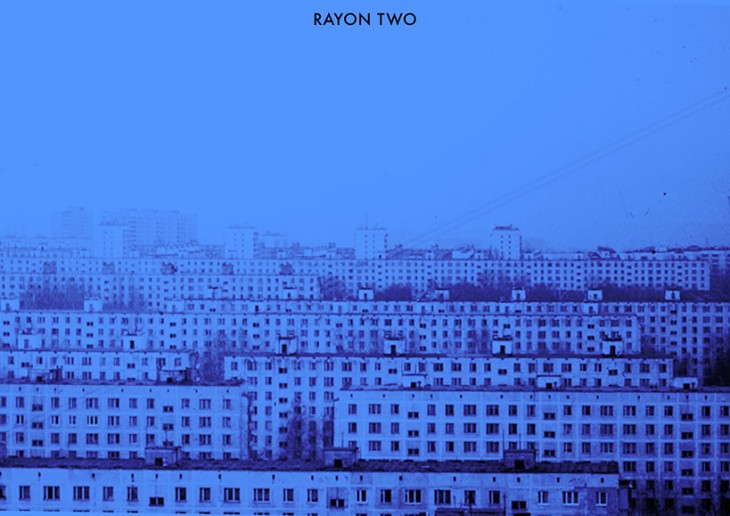
“Rayon two” is a proposal for creating sustainable living communities on the base of ex-soviet districts, built in 60’s under the socialist ideology, throughout the territory of Soviet Russia.
Planned for the soviet regime and socialist way of life, its rigid structures became an absolute in the context of Capitalist Russia. However the space and structures of these ex-soviet districts have the potential to become a good base for creating sustainable communities. Focusing in the district Kapotnya in Moscow, “Rayon two” aims to create a “green border” generating a more productive ecology for the city as a whole. The project proposes to develop a distribution of multifunctional blocks, which contain educational, social, productive, sporting, and cultural programs, and are interconnected with recreation areas. Using different dwelling typologies – apartment buildings and country type houses – “Rayon two” aims to increase the housing density, as well as to renovate most of the existing buildings in order to host a new green regime moving towards a sustainable way of life.
Looking at the example of Moscow we can clearly see the connection between residential architecture and the dwelling system and the political regime.
Before the revolution of 1917, when the country was under the tsarist authority 40% of the population of moscow lived in revenue houses. They were privately owned buildings with apartments for rent.
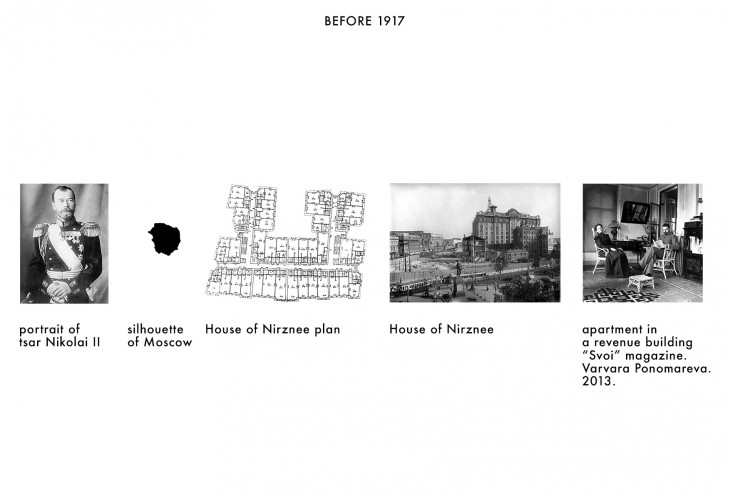
After 1917, when the Bolsheviks came to power, they confiscated all private buildings for governmental uses. People had to share commune barracks and apartments – each family occupied one room and kitchens and bathrooms were shared.
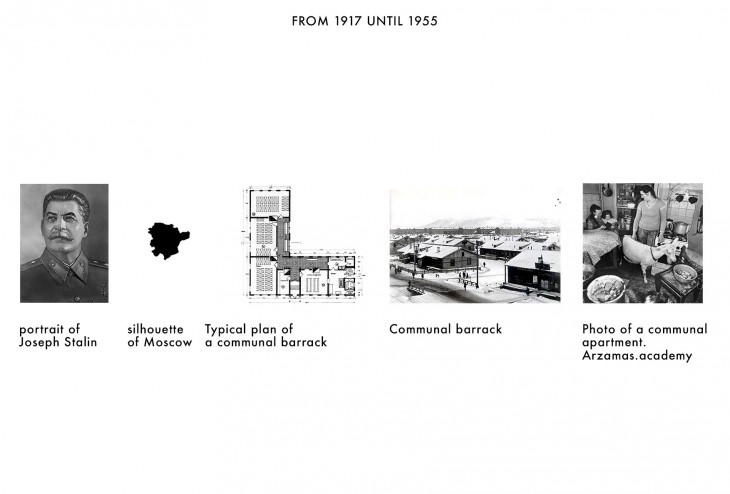
In 1955 Nikita Khrushchev became the leader of the USSR. His dream was to build individual dwelling for each family. This was the start of a massive building program and the prefabricated construction.
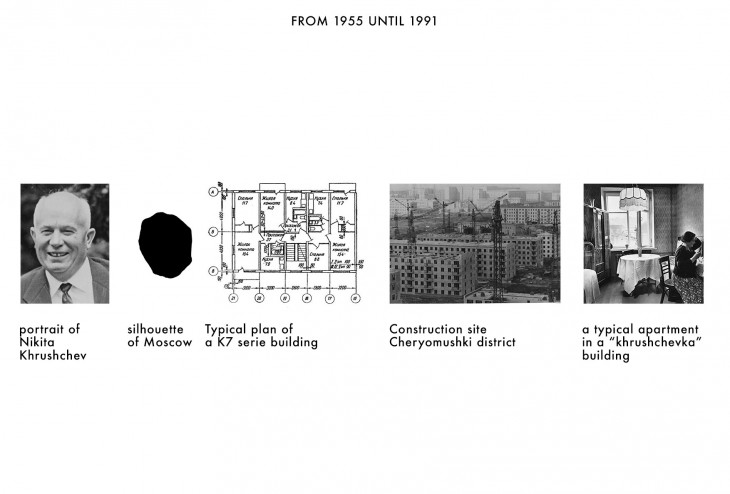
The aim was to build the biggest amount of dwelling with the lowest amount of money and time. The prototype of a so called “Khrushchevka” building was a 5 floors building (it was the highest allowed by medics to go without an elevator) they were fully made out of prefabricated elements and the apartments were very tiny. This building with slight modifications could be implemented in any part of the big county. 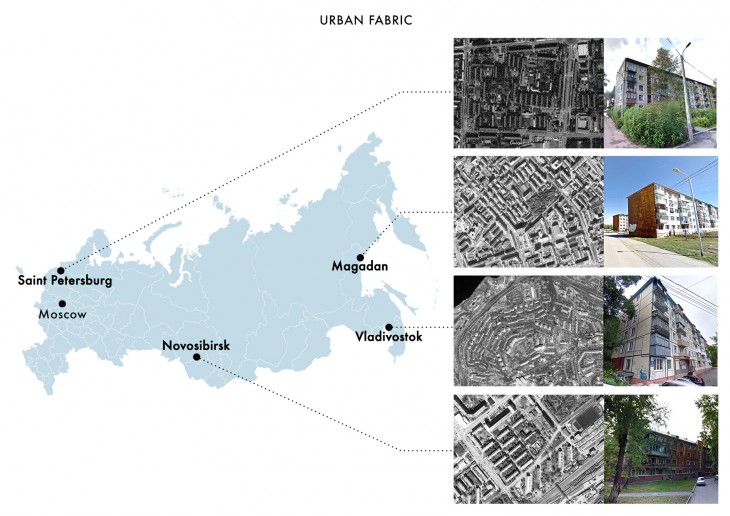
Soon Architects and ingenues started competing for the best, which meant the cheapest building. This lead to reducing the space (typical kitchen of 6 sq.m. became 4 sq.m., ceiling height from 3m. – 2,50m. etc.) the walls were getting thinner and thinner up to 4 cm.
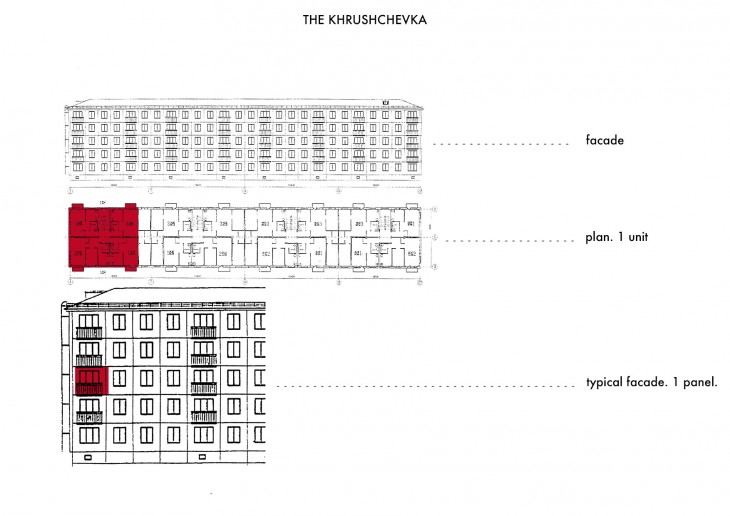
Districts built after the 1960’s in cities with completely different conditions look very-very similar to each other. this happened because of the Socialist ideals which were promoting social activity, but were not taking into account the individual. Right now the configuration of this architecture does not work for a comfortable living – people tend to be more individual and sometimes forget to be social, especially in the neighbourhoods where they live.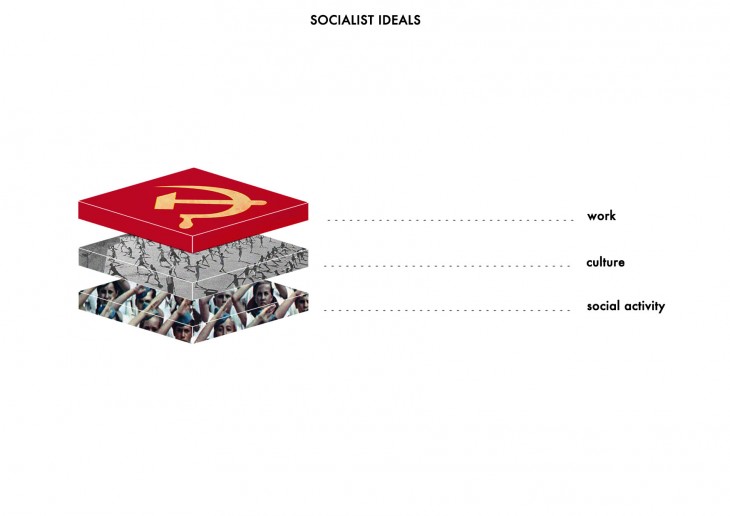
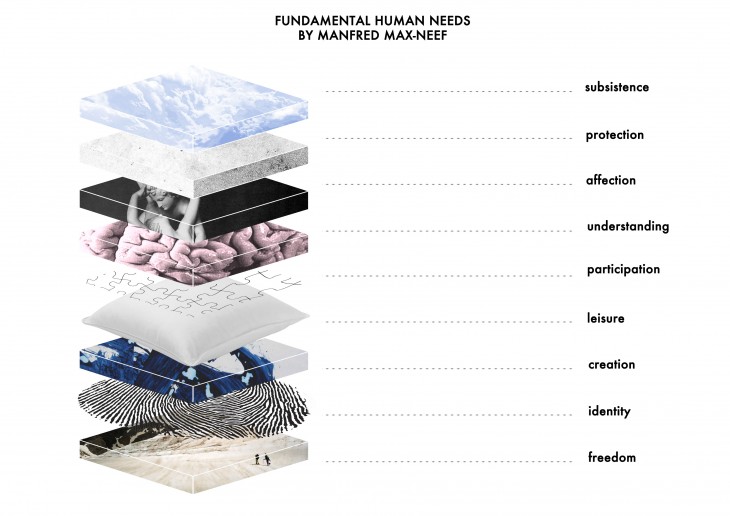
The prefabricated buildings built nowadays have bigger apartments and better quality of construction, but the dwelling system mow stays the same as in the socialist times.
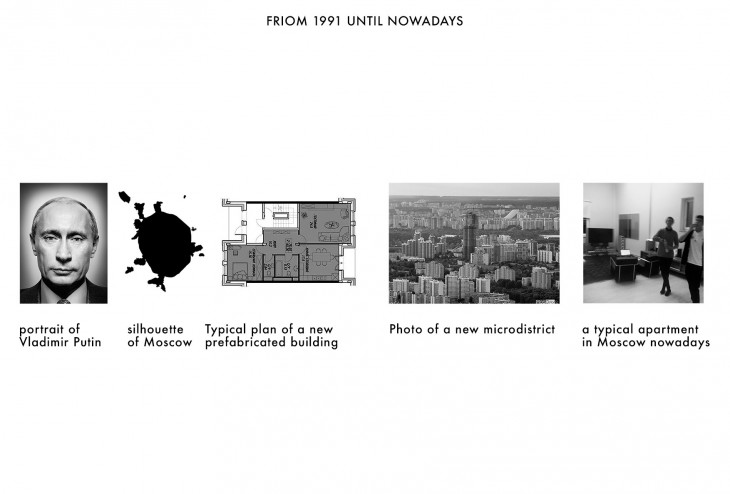
As a case study for my thesis project i chose Kapotnya district. It is considered as the worst district of Moscow for its bad ecology and social infrastructure (Russian Statistics Agency) on the north it is bordered with and oil refinery and on the east – with the 4th ring road of Moscow, which is a highway of 10 lines and is the border of the city.
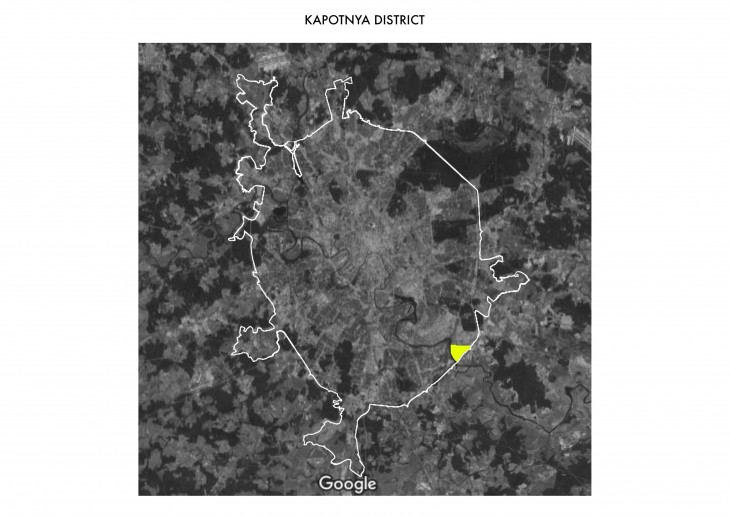
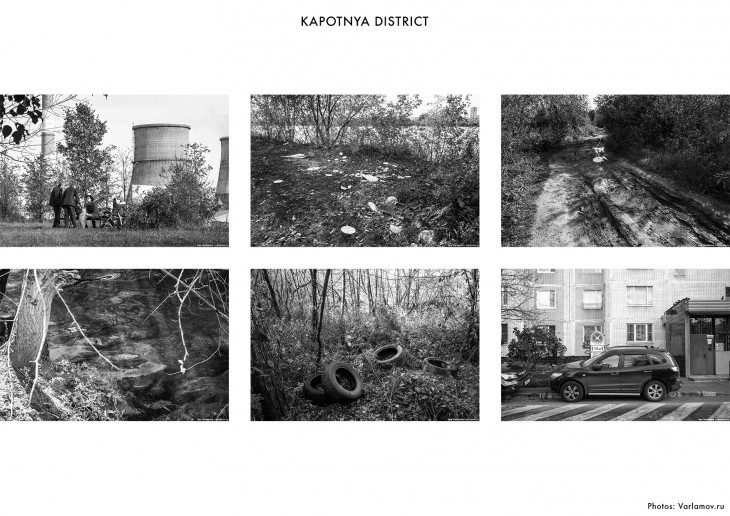
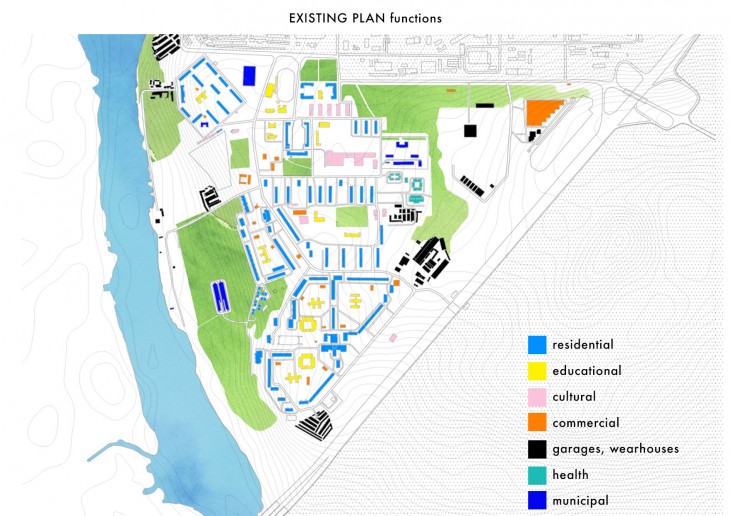
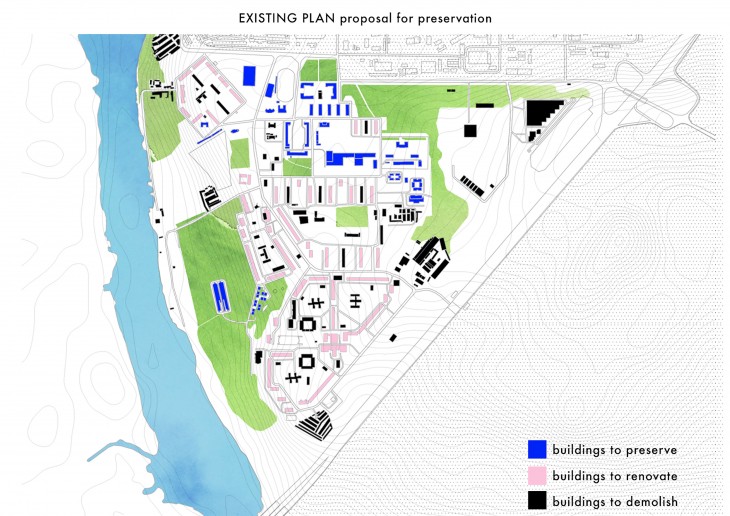
The main problems of the Khrushchev times districts are the following:
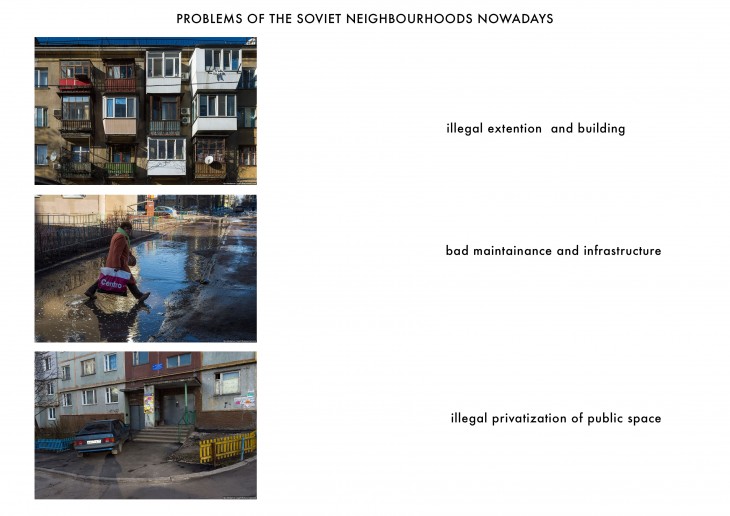
On order to create a better ecology and infrastructure for Kapotnya district “Rayon Two” proposes to create a “green border from the highway and factory and an attractive riverside:
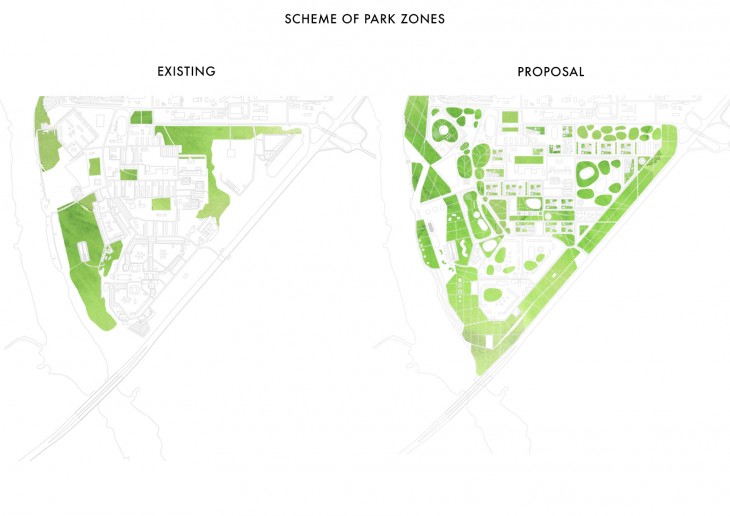
these are trees preferred for planting
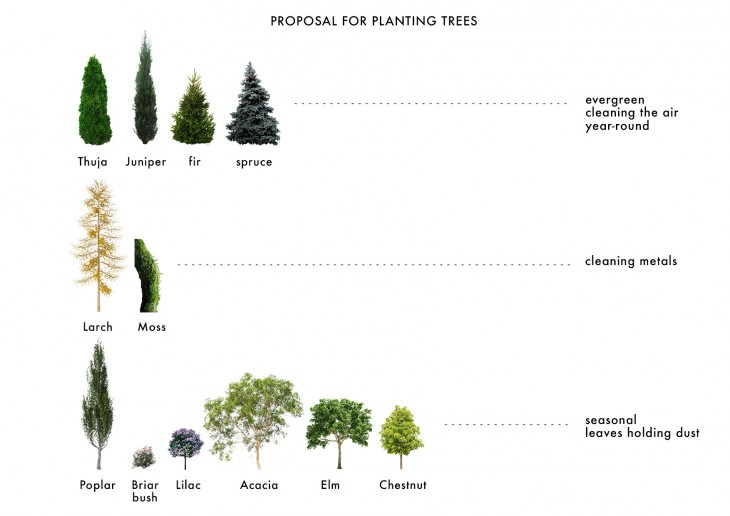
To make districts more comfortable and attractive for residents, and decentralise the city block division is proposed. Each of the blocks will have its own facilities and shared spaces for a more pleasant social activity between residents.
